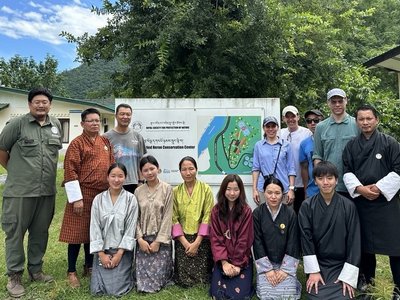

The Royal Society for the Protection of Nature, Bhutan (RSPN9 in collaboration with the Ugyen Wangchuk Institute for Forestry Research and Training (UWIFoRT) and the Natural History Museum and BOKU University in Austria is initiating a joint KoEF research project, Enhancing Biodiversity Protection and Building Capacity for Cooperative Research in Bhutan to Address Sustainable Development Goal 15 (EPiC). This project aims to investigate the complex relationship between forest management, avian biodiversity, and ecosystem health in Bhutan, with a particular focus on the habitat of the critically endangered White-bellied Heron. The initiative aligns with Sustainable Development Goal 15, aiming to ‘protect, restore, and promote sustainable use of terrestrial ecosystems, combat desertification, and halt land degradation and biodiversity loss’. The project inception meeting followed up by a series of workshops is happening from 22nd to 31st July 2024.
Capacity building constitutes a significant component of the project, with dedicated work packages aimed at enhancing the skills of Bhutanese researchers in ecological monitoring and conservation strategies. This workshop is an integral initiative of the EPiC Consortium aimed at addressing the critical need for enhanced land use and land cover (LULC) mapping in Bhutan, particularly focusing on the watersheds primarily for the White-bellied Herons, but also to other forest birds with relevance to EPiC. Despite the existence of a national LULC map, a refined version tailored to specific conservation goals is needed. Through this workshop, we will employ GIS and remote sensing technologies with the long-term aim of creating a high-resolution map that accurately reflects the natural and utilized forest areas, identifying potential breeding and foraging habitats for the herons, and assessing river systems pertinent to WBH ecology. The workshop aims to secure open-source geodata and identify the necessary accompanying information (habitat requirements, occurrence of heron and other associated species). Similarly, the workshop will also focus on training the participants on research methods and tools, and explore diverse scopes in enhancing the scientific knowledge on White-bellied Herons. As a part of the workshop, the participants are also making field visits to the White-bellied Heron Conservation Center.
The project is supported by the programme Cooperation Development Research (KoEF) from the OeAD, Austria's Agency for Education and Internationalisation.
